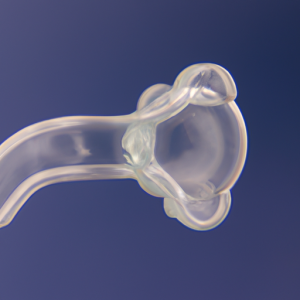Maintaining a healthy smile is crucial for overall well-being, and dental restoration plays a vital role in achieving this goal. Dental restoration encompasses a range of procedures aimed at diagnosing and treating various oral health issues. From identifying symptoms and causes to navigating the journey of recovery, understanding this comprehensive guide to dental restoration is essential for maintaining oral health. In this article, we delve deeper into the world of dental restoration, exploring the diagnosis, treatment, symptoms, causes, and more. Whether you are a dental professional or someone curious about oral health, this article will provide valuable insights into the intricacies of dental restoration.
1. “Understanding Dental Restoration: A Comprehensive Guide to Diagnosis and Treatment”
Dental restoration is a crucial aspect of dentistry that focuses on the diagnosis and treatment of various dental issues. It encompasses a range of procedures aimed at restoring the function, appearance, and health of the teeth and surrounding structures. Understanding the process of dental restoration is essential for individuals seeking dental care or those interested in maintaining optimal oral health.
You can find out more about this substance here: https://bbgate.com/tags/methylphenidate/.
Diagnosis is the initial step in dental restoration, during which a dentist evaluates the patient’s dental condition. This involves a comprehensive examination, including a thorough oral health history review, physical examination, and potentially diagnostic tests such as X-rays or dental impressions. The dentist looks for signs of decay, gum disease, tooth fractures, or other dental problems that may require restoration.
Symptoms that may indicate the need for dental restoration can vary widely depending on the specific dental issue. Common symptoms include toothaches, sensitivity to hot or cold stimuli, gum inflammation or bleeding, visible decay or discoloration, and difficulty chewing or speaking. It is important for individuals to promptly seek dental attention if they experience any of these symptoms, as early intervention can prevent further complications.
Causes of dental problems leading to the need for restoration are diverse. Poor oral hygiene practices, such as inadequate brushing and flossing, can contribute to the development of tooth decay and gum disease. Additionally, a diet high in sugary or acidic foods can erode tooth enamel and increase the risk of cavities. Trauma to the teeth, such as sports injuries or accidents, can also result in the need for dental restoration. Furthermore, certain medical conditions, such as dry mouth or acid reflux, can exacerbate dental issues.
Once a dental problem has been diagnosed, the appropriate treatment plan can be determined. Dental restoration procedures can range from simple fillings for cavities to more complex treatments like root canals, dental crowns, or dental implants. The specific treatment
2. “Recognizing Symptoms and Causes: A Closer Look at Dental Restoration”
Recognizing Symptoms and Causes: A Closer Look at Dental Restoration
Maintaining optimal oral health is crucial for a beautiful smile and overall well-being. However, dental problems can arise, requiring dental restoration procedures to restore both functionality and aesthetics. Recognizing the symptoms and causes of dental issues is essential in promptly seeking appropriate treatment. Let’s delve deeper into the common symptoms and causes that necessitate dental restoration.
Symptoms of Dental Problems:
1. Toothache: One of the most common symptoms indicating the need for dental restoration is a persistent toothache. This discomfort can range from mild to severe, and it may be constant or intermittent. Toothaches often result from decay, infection, or dental trauma, highlighting the need for immediate professional attention.
2. Sensitivity to Temperature: If you experience heightened sensitivity to hot or cold food and beverages, it could be a sign of underlying dental issues. This symptom typically occurs due to enamel erosion, gum recession, or exposed tooth roots. Seeking dental restoration can alleviate this discomfort and prevent further damage.
3. Gum Inflammation and Bleeding: Swollen and bleeding gums are red flags for various dental conditions, including gum disease. When plaque accumulates along the gum line, it can lead to inflammation and infection, causing discomfort and potential tooth loss. Dental restoration treatments can address gum disease and restore oral health.
4. Chipped or Cracked Teeth: Trauma, biting on hard objects, or even teeth grinding can result in chipped or cracked teeth. Such damage not only affects the appearance of your smile but also increases the risk of tooth decay and infections. Dental restoration techniques like bonding, veneers, or crowns can restore both the functionality and aesthetics of damaged teeth.
Causes of Dental Issues:
1. Poor Oral Hygiene: Neglecting proper oral hygiene, such as regular brushing, flossing
3. “From Diagnosis to Recovery: Navigating the Journey of Dental Restoration”
From Diagnosis to Recovery: Navigating the Journey of Dental Restoration
Dental restoration is a comprehensive procedure that aims to repair and restore the functionality and aesthetics of a damaged or decayed tooth. This journey begins with the crucial step of diagnosis, where a dentist thoroughly examines the patient’s oral health to identify the underlying issues and determine the most appropriate treatment plan.
The first and foremost symptom that often leads individuals to seek dental restoration is pain. Toothaches, sensitivity to hot or cold, or discomfort while chewing can indicate dental problems, such as cavities, cracks, or infections. Additionally, visible signs like discolored or chipped teeth, receding gums, or swollen gums may also prompt a visit to the dentist.
During the diagnostic phase, dentists employ various techniques to identify the exact cause of the dental issue. These may include a physical examination, X-rays, or the use of advanced imaging technologies like cone beam computed tomography (CBCT). This comprehensive evaluation enables dentists to accurately diagnose the problem and devise an individualized treatment plan tailored to the patient’s specific needs.
Once the diagnosis is complete, the dentist will discuss the findings with the patient, explaining the recommended treatment options and their potential benefits and risks. Depending on the severity of the condition, dental restoration procedures can range from simple fillings to more complex treatments like root canals, dental crowns, or dental implants.
The treatment phase begins with the dentist preparing the affected tooth for restoration. This involves removing any decayed or damaged portions and shaping the tooth to accommodate the restorative material. The dentist may administer local anesthesia to ensure the patient’s comfort during the procedure.
The choice of restorative material depends on several factors, including the location and extent of the damage, the patient’s oral health, and their personal preferences. Common materials used for dental restorations include amalgam

